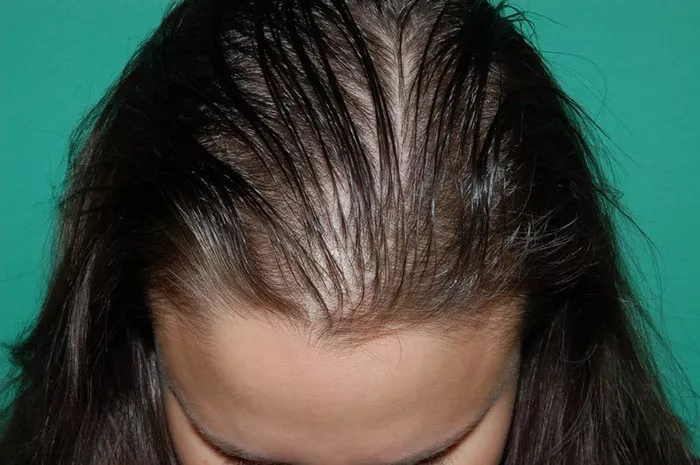The act of pulling one’s hair out, known as trichotillomania, is a complex and often misunderstood behavior. Individuals who experience this urge may find themselves grappling with questions about why they can easily pull their hair out. In this article, we will delve into the reasons behind this behavior, shedding light on the psychological and emotional aspects that contribute to the phenomenon of hair pulling.
Defining Trichotillomania
Trichotillomania is a mental health disorder characterized by the repetitive and compulsive urge to pull out one’s hair. This condition falls under the umbrella of body-focused repetitive behaviors (BFRBs) and can affect individuals of all ages. While the exact cause of trichotillomania is not fully understood, various factors contribute to its development.
Psychological Factors: Stress and Anxiety
One of the primary psychological factors linked to trichotillomania is stress and anxiety. Individuals experiencing high levels of stress may find temporary relief by engaging in hair-pulling behaviors. This act can serve as a coping mechanism, providing a momentary distraction from overwhelming emotions. Understanding the correlation between stress and trichotillomania is crucial for those seeking to manage and overcome this compulsive behavior.
Emotional Regulation: Coping with Negative Emotions
People with trichotillomania often struggle with emotional regulation. The act of pulling out hair can become a way to cope with negative emotions, such as sadness, frustration, or boredom. It serves as a means of self-soothing, providing a momentary escape from internal struggles. Recognizing the emotional triggers behind the urge to pull hair is a key step in addressing and managing trichotillomania.
Sensory Stimulation: Seeking Comfort through Tactile Sensations
The tactile sensations associated with hair pulling can provide individuals with a sense of comfort and relief. Some individuals may pull out their hair unconsciously while engaging in other activities, such as reading or watching TV, as a way to stimulate their senses. Understanding the sensory aspect of trichotillomania is essential for developing alternative coping mechanisms that fulfill the need for sensory stimulation without causing harm.
Boredom and Inactivity: An Unconscious Habit
Trichotillomania can become an unconscious habit, particularly during periods of boredom or inactivity. The repetitive nature of hair pulling can make it a go-to activity when the mind is not engaged. Breaking the cycle of unconscious hair pulling involves addressing the underlying causes of boredom and finding alternative activities to occupy the mind and hands.
Genetic Predisposition: A Familial Link
Research suggests a genetic component in the development of trichotillomania. Individuals with a family history of BFRBs may be more predisposed to developing similar behaviors. While genetics play a role, environmental factors and individual experiences also contribute to the manifestation of trichotillomania. Recognizing any familial patterns can provide insight into the roots of the behavior.
Co-Occurring Mental Health Conditions: A Complex Intersection
Trichotillomania often coexists with other mental health conditions, such as depression, obsessive-compulsive disorder (OCD), or attention-deficit/hyperactivity disorder (ADHD). Understanding the interplay between trichotillomania and co-occurring conditions is crucial for comprehensive treatment. Addressing the underlying mental health issues can contribute to a more effective and holistic approach to managing hair-pulling behaviors.
Environmental Triggers: Identifying External Influences
Certain environmental triggers can exacerbate the urge to pull hair. Changes in routine, stressful life events, or exposure to triggering stimuli may intensify the compulsive behavior. Identifying and addressing these external influences can be instrumental in developing coping strategies and preventing relapses.
Seeking Professional Help: A Path to Recovery
Recognizing the reasons behind the urge to pull hair is a significant step, but seeking professional help is essential for effective management and recovery. Mental health professionals, such as therapists and counselors, can provide therapeutic interventions that address the root causes of trichotillomania. Cognitive-behavioral therapy (CBT) is a commonly recommended approach, helping individuals identify and change negative thought patterns and behaviors associated with hair pulling.
Building Healthy Coping Mechanisms: A Personalized Approach
Recovery from trichotillomania involves building healthy coping mechanisms to replace the act of hair pulling. This may include stress management techniques, mindfulness practices, and alternative activities that fulfill the sensory need without causing harm. Developing a personalized approach, tailored to the individual’s triggers and experiences, is crucial for long-term success in overcoming trichotillomania.
See Also: Nourishing Naturally: 9 Steps to Prevent Hair Loss in Women
Conclusion
Understanding why one can easily pull their hair out involves a nuanced exploration of psychological, emotional, genetic, and environmental factors. Trichotillomania is a complex condition that requires compassion, self-awareness, and professional support for effective management and recovery. By acknowledging the various aspects contributing to the urge to pull hair, individuals can embark on a journey towards healing, adopting healthier coping mechanisms, and reclaiming control over their behaviors.


